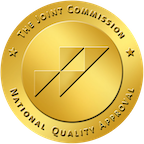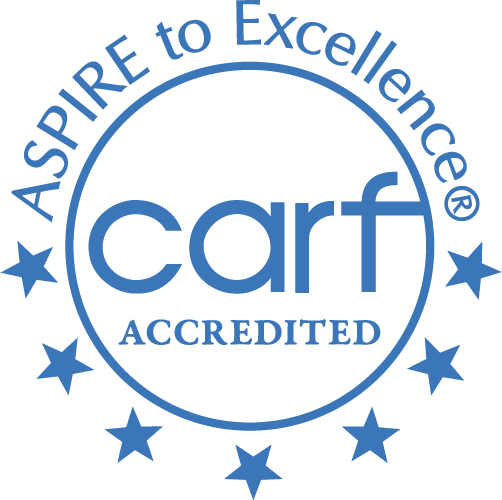Skip To Rehab Listing
Treatment Service Settings and Recovery Modalities
Harbor Springs's numerous rehabilitation centers, a number of which are listed below, address a problem that is widespread in cities throughout the United States: drug and alcohol abuse. These centers fight this problem locally by providing locations and provisions that are suitable for clients within the area. These settings include: short term drug and alcohol rehab centers, outpatient counseling, detoxification facilities, inpatient addiction treatment centers, long term rehabs.
Substance abuse treatment centers utilize several methods, from long-established approaches to newer approaches such as: anger management, rational emotive behavioral therapy, contingency management/motivational incentive, group therapy, dialectical behavior therapy, matrix model. The outcome is an array of services that clear the path to achievable sustained recovery for many patients.
Special Programs for Substance Abuse Offered by Rehab Facilities
People struggling with drug or alcohol use often require tailored support to break free from addiction. That is why alcohol and drug rehab centers in Harbor Springs offer specialized programs that help patients within their personal situations. Some of these resources are included here: veterans, suicide prevention services, self-help groups, domestic violence, persons with eating disorders, persons who have experienced sexual abuse.
Treatment Payment Alternatives in Harbor Springs
Clients encounter various economic situations, which is why addiction rehab programs offer many payment choices, like: private insurance, cash or self-payment, sliding fee scale, military insurance, county or local government funds, other state funds.
Financing should not be a hurdle to substance abuse rehab. Rehabilitation programs guide patients toward the financing alternatives that fit their personal economic needs.
With a variety of facilities, rehabs, services, methods and payment options, Harbor Springs provides patients several options when it comes to seeking recovery from substance abuse.
Commonly Asked Questions about Addiction and Treatment
What does drug withdrawal feel like?
Drug withdrawal is a complex process that can feel different for everyone, depending largely on the type of substance involved, the duration and intensity of use, and individual factors like overall health and genetic predisposition. However, some general experiences and symptoms are often associated with the withdrawal process:
Physical Symptoms: Many people experience physical discomfort or illness during withdrawal. Depending on the substance, this can range from flu-like symptoms (such as fever, chills, sweating, muscle aches, and fatigue) to more severe symptoms like seizures or hallucinations. Opioid withdrawal, for example, is often compared to a severe flu, while alcohol withdrawal can be life-threatening in severe cases.
Psychological Symptoms: Withdrawal can also involve psychological symptoms like anxiety, depression, mood swings, irritability, difficulty concentrating, and cravings for the substance. These can be just as challenging, if not more so, than the physical symptoms.
Sleep Disturbances: Insomnia is a common symptom of withdrawal from many substances, while vivid or disturbing dreams may occur when withdrawing from others.
Discomfort and Distress: Generally, withdrawal can be a very uncomfortable and distressing process. The body has become used to the presence of the substance, and it can react strongly when the substance is no longer available.
Cravings: One of the most challenging aspects of withdrawal for many people is the intense cravings for the substance. These cravings can be both physical and psychological, and they can be triggered by various factors, including stress, people, places, or things associated with substance use.
Can you send a person to rehab against their will?
The ability to send someone to rehab against their will is highly dependent on the specific laws and regulations of your location. In general, in many jurisdictions, including most states in the U.S., adults cannot be forced into rehab without their consent unless certain legal criteria are met.
However, in some cases where the person poses a danger to themselves or others, a process known as "involuntary commitment" may be possible. This generally involves a court order and typically requires proof that the person is unable to make rational decisions about their health and safety due to their substance use. The specifics of this process, including the standards of proof and the length of time a person can be held, vary widely by jurisdiction.
For minors, parents or guardians typically have the legal right to place their child into a treatment program without the child's consent. Again, the exact laws vary by jurisdiction.
Even if it's legally possible to send someone to rehab against their will, it's important to note that involuntary treatment can be controversial and is not always the most effective approach. Addiction treatment typically requires active participation and a personal commitment to recovery for the best chances of success. Instead, consider engaging a professional interventionist or counselor who can help facilitate a conversation about the person's substance use and the benefits of treatment.
In all cases, it's important to consult with a legal professional in your area to understand the legalities around involuntary treatment. It's also crucial to work with healthcare professionals to ensure that any actions taken are in the best interests of the person struggling with addiction.
How do I stop enabling an addict?
"Helping someone stop enabling an addict can be a challenging process, as the enabler often has deeply ingrained habits and patterns that need to be addressed. Here are some steps to consider:
Recognize Enabling Behavior: First, you need to identify the behaviors that are enabling the addiction. Enabling behaviors can include things like providing money that funds the addiction, covering for the addict's mistakes or responsibilities, or continually forgiving harmful behavior without setting boundaries.
Educate Yourself: Learn about addiction and its dynamics. Understanding that addiction is a disease and not merely a matter of willpower can help change your perspective and reactions.
Set Boundaries: Establish and communicate clear, firm boundaries regarding what you will and won't accept. Stick to these boundaries even if it's difficult.
Stop Rescuing: Refrain from protecting the person from the consequences of their addictive behavior. It is important for them to experience the full impact of their actions.
Encourage Treatment: Instead of protecting the person from their addiction, encourage them to seek professional help. Offer to assist in finding treatment options or attending support groups.
Seek Support: Enabling patterns can be tough to break. Seek help from therapy, counseling, or support groups like Al-Anon. These resources can provide you with tools and strategies to stop enabling.
Practice Self-Care: Ensure you're taking care of your own physical and emotional health. It's easy to get so wrapped up in the addicted person's problems that you neglect your own needs.
Maintain Consistency: It's essential to be consistent with your new approach. If you occasionally slip back into enabling behaviors, the person with the addiction may continue to expect it.
Be Patient: Changing long-standing patterns of behavior takes time, both for you and the person with the addiction. Remember to be patient with yourself and with them.
Remember, You're Not to Blame: Addiction is a complex disease influenced by many factors. It's important to remember that you're not responsible for the other person's addiction or recovery. Your role is to support in healthy ways, not to cure the addiction.














